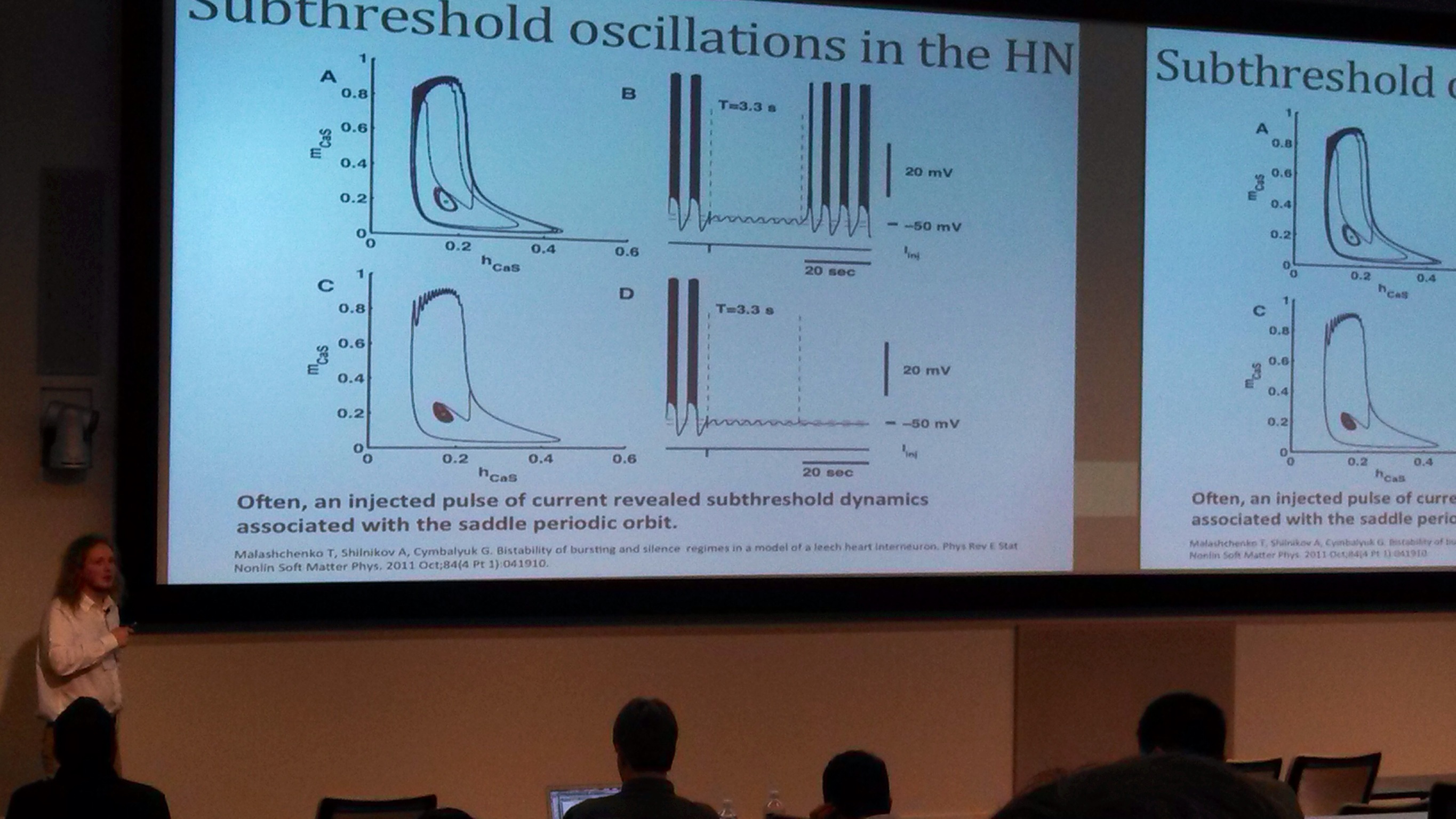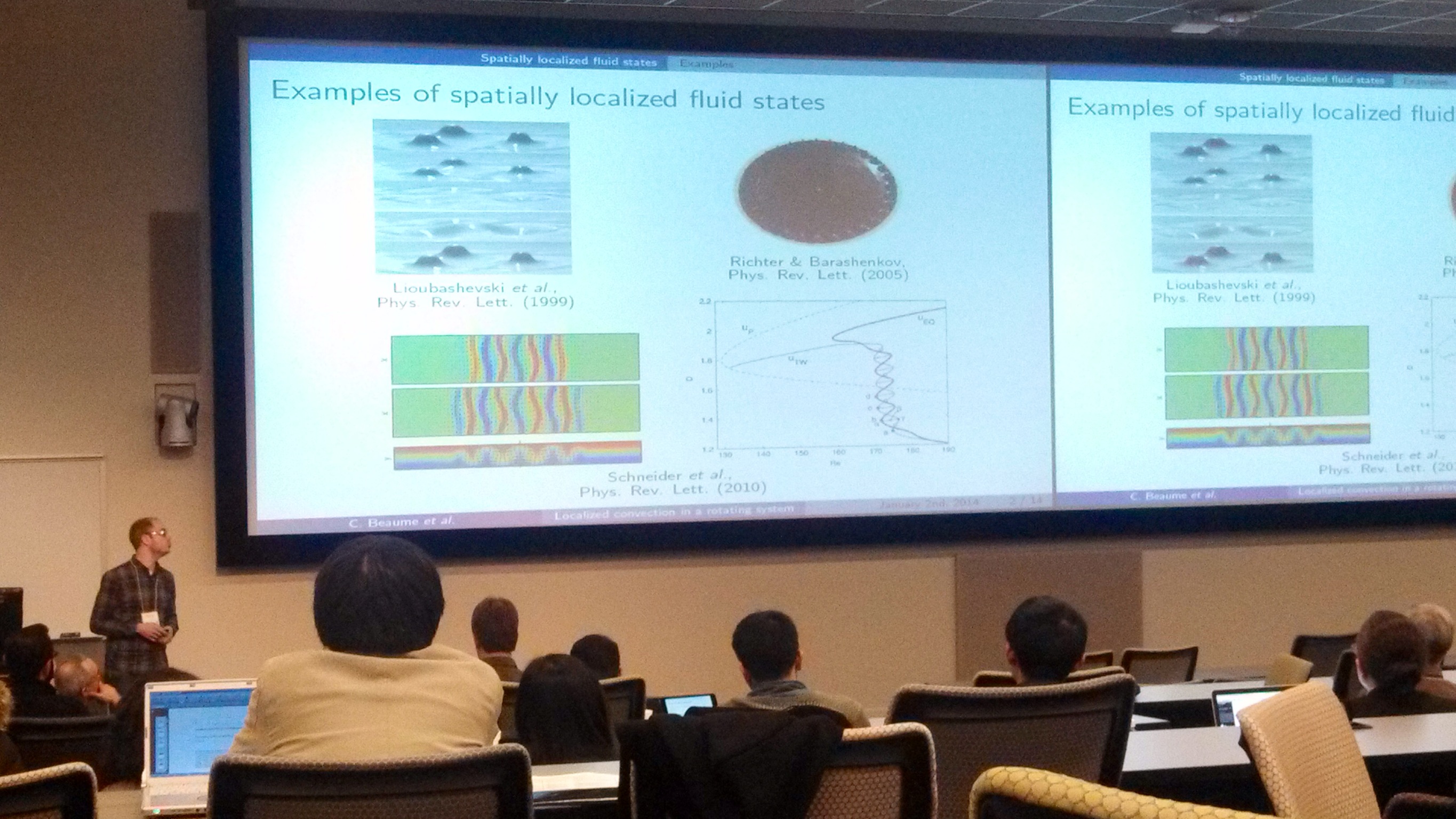The 33rd meeting of Dynamics Days US was hosted by the Center for Nonlinear Science at the Georgia Institute of Technology (GT) in Atlanta on January 2-5, 2014. With the new year came new researchers, notable speakers, and the (infamous) Polar Vortex. The uncharacteristically low temperatures didn't slow the pace, with over 150 attendees representing a wide variety of fields including almost 43% from physics, 23% from mathematics and 14% from engineering, as well as nearly 20% from underrepresented minority groups. Nearly 50 talks were presented over the three and a half days. Included in that time were two poster sessions with a total of 89 presenters, among which were the three poster award winners: Tingli Xing (Georgia State University), "Chaos, stirred not shaken"; David Meichle (University of Maryland), "Three-dimensional tracking of nanoparticles in superfluid helium"; and Yair Mau (Duke University), "Reversing desertification: a pattern-formation approach" won first, second, and third place, respectively, with an additional prize awarded to Madhura Joglekar (University of Maryland, College Park) for her outstanding work as a poster session judge. All of the winners received books donated by the sponsors from Springer US Publishing, and travel awards for the traveling winners were sponsored by the GT School of Physics. Also included in the meeting's events was an outing to the climbing wall at Georgia Tech's Campus Recreation center led by Georgia Tech graduate student Daniel Borrero.

William Barnett (Georgia State), "Protection against multistability in a half-center oscillator"
Presented topics covered a diverse range, including bacterial phage evolution, network synchronization, pattern formation, cardiac arrhythmias, and fluid instabilities. Posters expanded on these topics, discussing the dynamics of animal behavior and communication through social media, as well as implementing studies from dynamics to create new computation methods, among others.
Among many noteworthy talks, James Hanna (Virginia Tech) presented a framework for understanding metrically-constrained systems. His example, the skirts associated with Sufi whirling, exhibits steady patterns of traveling waves that break the apparent symmetry of the dancer – skirt system. Unexpectedly, inertial forces and the symmetry of the sheet play an essential role in the generation of these patterns.
Yohannes Shiferaw (Cali. State Univ., Northridge) argued that calcium alternans, beat-to-beat alternations in cardiac rhythm, arise from the interaction from the stochasticity of ion channels and the essential nonlinearity of channel signaling. Further, the transition from normal calcium dynamics to the development of alternans occurs by an order-disorder phase transition with some associated features of universality. He closed his lecture by suggesting that these results should apply to a range of physical systems of interest.
Paul Park (Northwestern Univ.) explored mixing on a hemisphere by cutting wedges and shuffling, resulting in pattern formation and chaotic behavior. Inspired by the three-dimensional granular flow in a rotating tumbler, these results can be used for studying complex dynamics in other systems that can be modeled by the simple cutting and shuffling method of mixing implemented in the hemisphere.
Jakob Löber (TU Berlin) demonstrated an impressive numerical technique for the control of the position of traveling waves in reaction-diffusion systems. Extension to two spatial dimensions allows one to control the shape of the wave, irrespective of the particulars of the reaction kinetics.
Lou Pecora (Naval Research Lab) discussed the synchronization of clusters in complex networks. While the behavior of clusters formation is often difficult to predict, by using symmetries from computational group theory, the stability of these clusters can be determined. Since networks typically are made with a large number of nodes, the number of symmetries, found by determining the structure-preserving mappings of the adjacency matrix, of these networks are also large – in the millions or billions. By exploring their theory through an electro-optic experiment involving alignment of a liquid crystal display using an applied laser, they show that the desynchronization of isolated clusters is directly related to decomposition of the group of symmetries into subgroups.
Valentina Shevtzova (Univ. of Brussels) presented results from experiments on frozen wave development in fluids in microgravity. On parabolic flights, oscillations of a miscible binary fluid system drive the initially horizontally separated fluids to a vertical column state, before being overtaken by a Faraday instability. Accompanying videos of stunts performed by gleeful experimenters aboard the low-gravity flight punctuated the presentation.
On behalf of the organizing committee, we would like to warmly thank the sponsors, administrators, Georgia Tech, the Center for Nonlinear Sciences, and our participants for a wonderful conference, and wish our colleagues luck in their future endeavors.

Cédric Beaume (UC Berkeley), "Localized convection in a rotating system"
Christopher Marcotte and Andrea Welsh